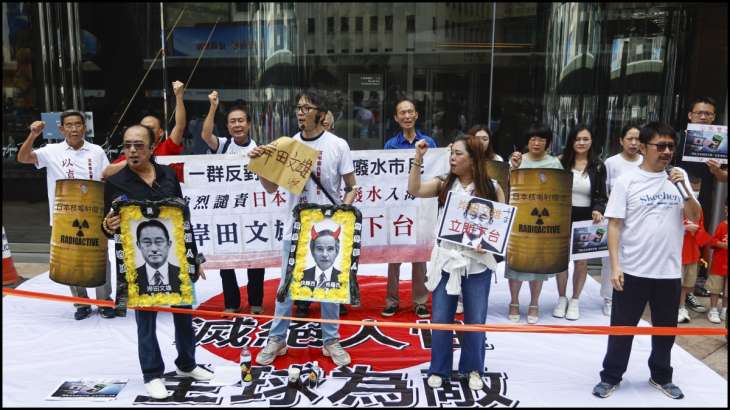
Japanese Prime Minister Fumio Kishida on Monday requested China to urge its citizens to stop acts of harassment in response to Tokyo’s controversial decision to release radioactive wastewater from the Fukushima nuclear power plant.
Japan’s decision to release water from the Fukushima nuclear power plant has been greeted with horror by the local fishing industry as well as China and several Pacific Island states. China – which together with Hong Kong imports more than $1.1 billion of seafood from Japan every year – has slapped a ban on all seafood imports from Japan, citing health concerns. Protests against the decision have also taken place in South Korea.
Since then Chinese citizens are reportedly harassing Japanese diplomatic facilities and schools in China, including through crank calls and stone pelting towards Japan’s embassy. “I must say it is regrettable,” said Kishida, adding that the Chinese government has not responded to requests from Japan for a joint scientific discussion of the release by experts.
Many of the crank callers reportedly shouted in Chinese, and some yelled “stupid” and other swear words after the wastewater was released. However, Kishida has maintained that the plan is seen by several countries as scientific and transparent. He also said that Japan’s Vice Minister for Foreign Affairs Masataka Okano has summoned China’s ambassador, Wu Jianghao, to ask that Chinese people act calmly and responsibly.
The Japanese PM also promised to protect Japan’s fisheries industry from the impact of China’s import ban and said he will announce support measures in the future. Japan’s Foreign Ministry has also issued an advisory for its citizens in China urging them of exercising caution, citing an escalation in the harassment and violent protests. It also warned them not to talk loudly in Japanese to avoid attention.
Japan’s plan to release the radioactive water has also faced opposition at home from local fishing groups who have expressed concern that it will hurt the repuation of seafood from Fukushima area. Additionally, all seawater and fish sampling data since the release have been way below set safety limits.
Japanese Economy and Industry Minister Yasutoshi Nishimura visited Fukushima on Monday to help with damage control. “I hope to promote delicious Fukushima seafood to as many people in and outside Japan as possible. While safely carrying out the release, we will be transparent in disclosing all data,” he said.
Why did Japan release the radioactive water?
In 2011, a magnitude 9.0 earthquake off the northeastern coast of Japan’s main island, Honshu, triggered a tsunami that devastated many coastal areas of the country. Tsunami waves knocked out the Fukushima nuclear power plant’s backup electricity supply and caused meltdowns in three of its reactors. The event is regarded as one of the worst nuclear accidents in history.
Since the accident, water has been used to cool the damaged reactors. But, as the reactor core contains numerous radioactive elements, including ruthenium, uranium, plutonium, strontium, caesium and tritium, the cooling water has become contaminated.
Japan has argued that the plant contains 134 million tonnes of the wastewater stored in around 1,000 tanks and it must be removed to free up space to build facilities for the plant’s cleanup and decommissioning. This project is expected to take three decades.
The discharge process was approved by the International Atomic Energy Agency – the intergovernmental organisation that develops safety standards for managing radioactive waste.
(with AP inputs)
ALSO READ | Why Japan started releasing contaminated water from Fukushima nuclear plant into Pacific – Is it concerning?